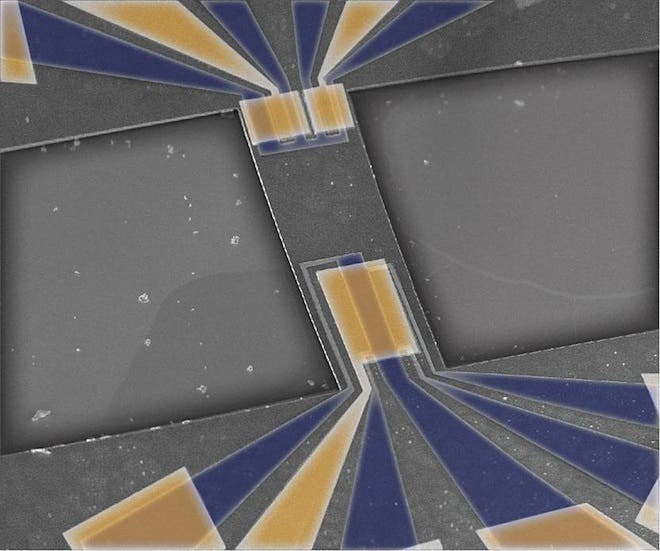
Trekkies have a reason to rejoice one again after Japanese researchers have successfully devised the first working phaser – a laser that shoots sound particles instead of light. It will take a while though until you’ll be able to zap your neighbors around with a sound canon, as the scientists still need to work around a physical problem their currently facing to allow the vibrations to be transmitted as energy.
Since their advent more than 50 years ago lasers have become indispensable to modern technology, from measurement devices, to optical tech, to of course military applications. What makes them so appealing is that they’re very efficient at displacing energy. A laser works by emitting light particles, known as photons, at a specific and very narrow wavelength, which then travel together at the same time and direction.
Previous attempts have been made of creating a sonic laser, but mostly have failed due to the immense technical difficulties associated. In 2010 a team of researchers at the Johns Hopkins University in Baltimore boasted they had created the first sound laser, however this wasn’t a full sound laser, but a hybrid. This device fooled sound particles – known as phonons – to follow photons emitted from a traditional laser to create a coherent sound emission.
Japanese researchers at NTT Basic Research Laboratories have gotten rid of the optical part and created a working, stand-alone phaser. The team’s device works by employing a mechanical oscillator that excites phonons, which become relaxed and then release their energy back into the device. This trapped energy causes the device to vibrate, however under a very narrow wavelength, similarly to how the laser emits photons. The entire device is etched onto an integrated circuit that’s about 1 cm by 0.5 cm.
Beam me up, Scotty!
However, while lasers can deliver beams of photons anywhere, even through the vacuum of space, sound waves require a medium in order to propagate. This implies that, for the time being at least, phaser waves are confined to their device.
“We would lose the lasing if we get it out,” said co-author of the paper Imran Mahboob of NTT Basic Research Laboratories in Japan. “So we will need to figure out how to build structures onto the resonator that would allow us to transmit the vibrations out as energy.”
Even so, the device is far from being useless. For instance, a tiny device inside the phaser translates the mechanical vibration into an oscillating electrical signal, which could serve as a tiny clock that is a lot more efficient than current electronics that rely on quartz crystals. The phaser could also be used to make extremely precise measurements or for ultrasound imaging purposes.
“It’s still in its infancy, but they showed it can be done, and more people will get involved,” said Jacob Khurgin of Johns Hopkins University in Baltimore.
The phaser was described in a paper published in the journal Physical Review Letters. What’s interesting however is yet again how science fiction servers to inspire and guide the world’s brightest mind to devise them into reality. Previously we’ve reported on other Star Trek gadgets and concepts that made their way to scientists’ drawing boards, like the tricorder, the holodeck and even warp-drive, currently investigated by NASA.
via Wired






